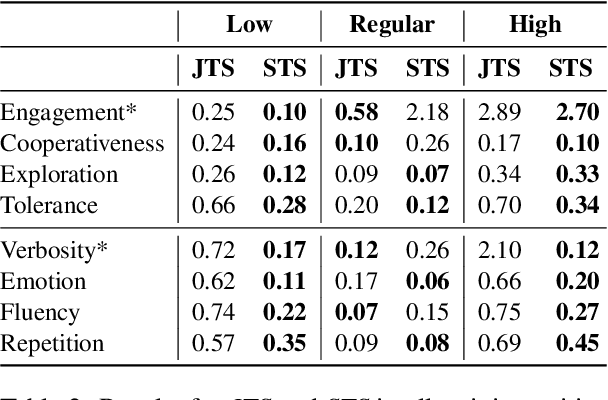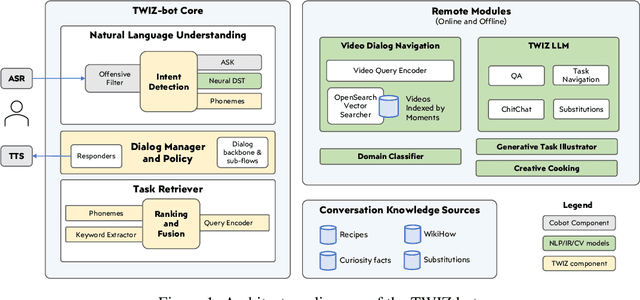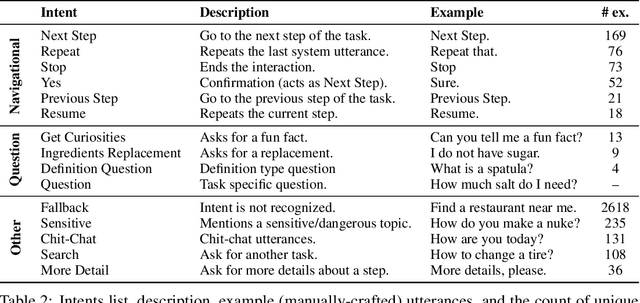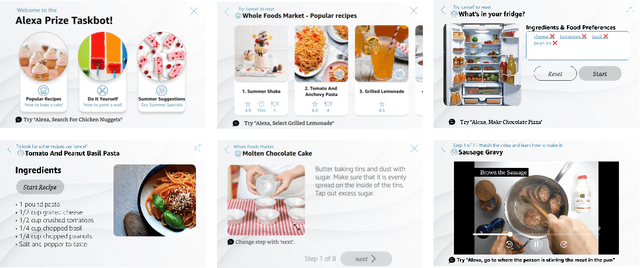David Semedo
RedTWIZ: Diverse LLM Red Teaming via Adaptive Attack Planning
Oct 08, 2025Abstract:This paper presents the vision, scientific contributions, and technical details of RedTWIZ: an adaptive and diverse multi-turn red teaming framework, to audit the robustness of Large Language Models (LLMs) in AI-assisted software development. Our work is driven by three major research streams: (1) robust and systematic assessment of LLM conversational jailbreaks; (2) a diverse generative multi-turn attack suite, supporting compositional, realistic and goal-oriented jailbreak conversational strategies; and (3) a hierarchical attack planner, which adaptively plans, serializes, and triggers attacks tailored to specific LLM's vulnerabilities. Together, these contributions form a unified framework -- combining assessment, attack generation, and strategic planning -- to comprehensively evaluate and expose weaknesses in LLMs' robustness. Extensive evaluation is conducted to systematically assess and analyze the performance of the overall system and each component. Experimental results demonstrate that our multi-turn adversarial attack strategies can successfully lead state-of-the-art LLMs to produce unsafe generations, highlighting the pressing need for more research into enhancing LLM's robustness.
Self-ReS: Self-Reflection in Large Vision-Language Models for Long Video Understanding
Mar 26, 2025Abstract:Large Vision-Language Models (LVLMs) demonstrate remarkable performance in short-video tasks such as video question answering, but struggle in long-video understanding. The linear frame sampling strategy, conventionally used by LVLMs, fails to account for the non-linear distribution of key events in video data, often introducing redundant or irrelevant information in longer contexts while risking the omission of critical events in shorter ones. To address this, we propose SelfReS, a non-linear spatiotemporal self-reflective sampling method that dynamically selects key video fragments based on user prompts. Unlike prior approaches, SelfReS leverages the inherently sparse attention maps of LVLMs to define reflection tokens, enabling relevance-aware token selection without requiring additional training or external modules. Experiments demonstrate that SelfReS can be seamlessly integrated into strong base LVLMs, improving long-video task accuracy and achieving up to 46% faster inference speed within the same GPU memory budget.
Zero-Shot Action Recognition in Surveillance Videos
Oct 28, 2024



Abstract:The growing demand for surveillance in public spaces presents significant challenges due to the shortage of human resources. Current AI-based video surveillance systems heavily rely on core computer vision models that require extensive finetuning, which is particularly difficult in surveillance settings due to limited datasets and difficult setting (viewpoint, low quality, etc.). In this work, we propose leveraging Large Vision-Language Models (LVLMs), known for their strong zero and few-shot generalization, to tackle video understanding tasks in surveillance. Specifically, we explore VideoLLaMA2, a state-of-the-art LVLM, and an improved token-level sampling method, Self-Reflective Sampling (Self-ReS). Our experiments on the UCF-Crime dataset show that VideoLLaMA2 represents a significant leap in zero-shot performance, with 20% boost over the baseline. Self-ReS additionally increases zero-shot action recognition performance to 44.6%. These results highlight the potential of LVLMs, paired with improved sampling techniques, for advancing surveillance video analysis in diverse scenarios.
Multi-trait User Simulation with Adaptive Decoding for Conversational Task Assistants
Oct 16, 2024



Abstract:Conversational systems must be robust to user interactions that naturally exhibit diverse conversational traits. Capturing and simulating these diverse traits coherently and efficiently presents a complex challenge. This paper introduces Multi-Trait Adaptive Decoding (mTAD), a method that generates diverse user profiles at decoding-time by sampling from various trait-specific Language Models (LMs). mTAD provides an adaptive and scalable approach to user simulation, enabling the creation of multiple user profiles without the need for additional fine-tuning. By analyzing real-world dialogues from the Conversational Task Assistant (CTA) domain, we identify key conversational traits and developed a framework to generate profile-aware dialogues that enhance conversational diversity. Experimental results validate the effectiveness of our approach in modeling single-traits using specialized LMs, which can capture less common patterns, even in out-of-domain tasks. Furthermore, the results demonstrate that mTAD is a robust and flexible framework for combining diverse user simulators.
Show and Guide: Instructional-Plan Grounded Vision and Language Model
Sep 27, 2024



Abstract:Guiding users through complex procedural plans is an inherently multimodal task in which having visually illustrated plan steps is crucial to deliver an effective plan guidance. However, existing works on plan-following language models (LMs) often are not capable of multimodal input and output. In this work, we present MM-PlanLLM, the first multimodal LLM designed to assist users in executing instructional tasks by leveraging both textual plans and visual information. Specifically, we bring cross-modality through two key tasks: Conversational Video Moment Retrieval, where the model retrieves relevant step-video segments based on user queries, and Visually-Informed Step Generation, where the model generates the next step in a plan, conditioned on an image of the user's current progress. MM-PlanLLM is trained using a novel multitask-multistage approach, designed to gradually expose the model to multimodal instructional-plans semantic layers, achieving strong performance on both multimodal and textual dialogue in a plan-grounded setting. Furthermore, we show that the model delivers cross-modal temporal and plan-structure representations aligned between textual plan steps and instructional video moments.
GlórIA -- A Generative and Open Large Language Model for Portuguese
Feb 20, 2024



Abstract:Significant strides have been made in natural language tasks, largely attributed to the emergence of powerful large language models (LLMs). These models, pre-trained on extensive and diverse corpora, have become increasingly capable of comprehending the intricacies of language. Despite the abundance of LLMs for many high-resource languages, the availability of such models remains limited for European Portuguese. We introduce Gl\'orIA, a robust European Portuguese decoder LLM. To pre-train Gl\'orIA, we assembled a comprehensive PT-PT text corpus comprising 35 billion tokens from various sources. We present our pre-training methodology, followed by an assessment of the model's effectiveness on multiple downstream tasks. Additionally, to evaluate our models' language modeling capabilities, we introduce CALAME-PT (Context-Aware LAnguage Modeling Evaluation for Portuguese), the first Portuguese zero-shot language-modeling benchmark. Evaluation shows that Gl\'orIA significantly outperforms existing open PT decoder models in language modeling and that it can generate sound, knowledge-rich, and coherent PT-PT text. The model also exhibits strong potential for various downstream tasks.
Plan-Grounded Large Language Models for Dual Goal Conversational Settings
Feb 01, 2024Abstract:Training Large Language Models (LLMs) to follow user instructions has been shown to supply the LLM with ample capacity to converse fluently while being aligned with humans. Yet, it is not completely clear how an LLM can lead a plan-grounded conversation in mixed-initiative settings where instructions flow in both directions of the conversation, i.e. both the LLM and the user provide instructions to one another. In this paper, we tackle a dual goal mixed-initiative conversational setting where the LLM not only grounds the conversation on an arbitrary plan but also seeks to satisfy both a procedural plan and user instructions. The LLM is then responsible for guiding the user through the plan and, at the same time, adapting to new circumstances, answering questions, and activating safety guardrails when needed. We propose a novel LLM that grounds the dialogue on a procedural plan, can take the dialogue initiative, and enforces guardrails on the system's behavior, while also improving the LLM's responses to unexpected user behavior. Experiments in controlled settings and with real users show that the best-performing model, which we call PlanLLM, achieves a 2.1x improvement over a strong baseline. Moreover, experiments also show good generalization to unseen domains.
TWIZ: The Wizard of Multimodal Conversational-Stimulus
Oct 03, 2023



Abstract:In this report, we describe the vision, challenges, and scientific contributions of the Task Wizard team, TWIZ, in the Alexa Prize TaskBot Challenge 2022. Our vision, is to build TWIZ bot as an helpful, multimodal, knowledgeable, and engaging assistant that can guide users towards the successful completion of complex manual tasks. To achieve this, we focus our efforts on three main research questions: (1) Humanly-Shaped Conversations, by providing information in a knowledgeable way; (2) Multimodal Stimulus, making use of various modalities including voice, images, and videos; and (3) Zero-shot Conversational Flows, to improve the robustness of the interaction to unseen scenarios. TWIZ is an assistant capable of supporting a wide range of tasks, with several innovative features such as creative cooking, video navigation through voice, and the robust TWIZ-LLM, a Large Language Model trained for dialoguing about complex manual tasks. Given ratings and feedback provided by users, we observed that TWIZ bot is an effective and robust system, capable of guiding users through tasks while providing several multimodal stimuli.
Rating Prediction in Conversational Task Assistants with Behavioral and Conversational-Flow Features
Sep 20, 2023



Abstract:Predicting the success of Conversational Task Assistants (CTA) can be critical to understand user behavior and act accordingly. In this paper, we propose TB-Rater, a Transformer model which combines conversational-flow features with user behavior features for predicting user ratings in a CTA scenario. In particular, we use real human-agent conversations and ratings collected in the Alexa TaskBot challenge, a novel multimodal and multi-turn conversational context. Our results show the advantages of modeling both the conversational-flow and behavioral aspects of the conversation in a single model for offline rating prediction. Additionally, an analysis of the CTA-specific behavioral features brings insights into this setting and can be used to bootstrap future systems.
The Wizard of Curiosities: Enriching Dialogues with Fun Facts
Sep 20, 2023



Abstract:Introducing curiosities in a conversation is a way to teach something new to the person in a pleasant and enjoyable way. Enriching dialogues with contextualized curiosities can improve the users' perception of a dialog system and their overall user experience. In this paper, we introduce a set of curated curiosities, targeting dialogues in the cooking and DIY domains. In particular, we use real human-agent conversations collected in the context of the Amazon Alexa TaskBot challenge, a multimodal and multi-turn conversational setting. According to an A/B test with over 1000 conversations, curiosities not only increase user engagement, but provide an average relative rating improvement of 9.7%.
 Add to Chrome
Add to Chrome Add to Firefox
Add to Firefox Add to Edge
Add to Edge